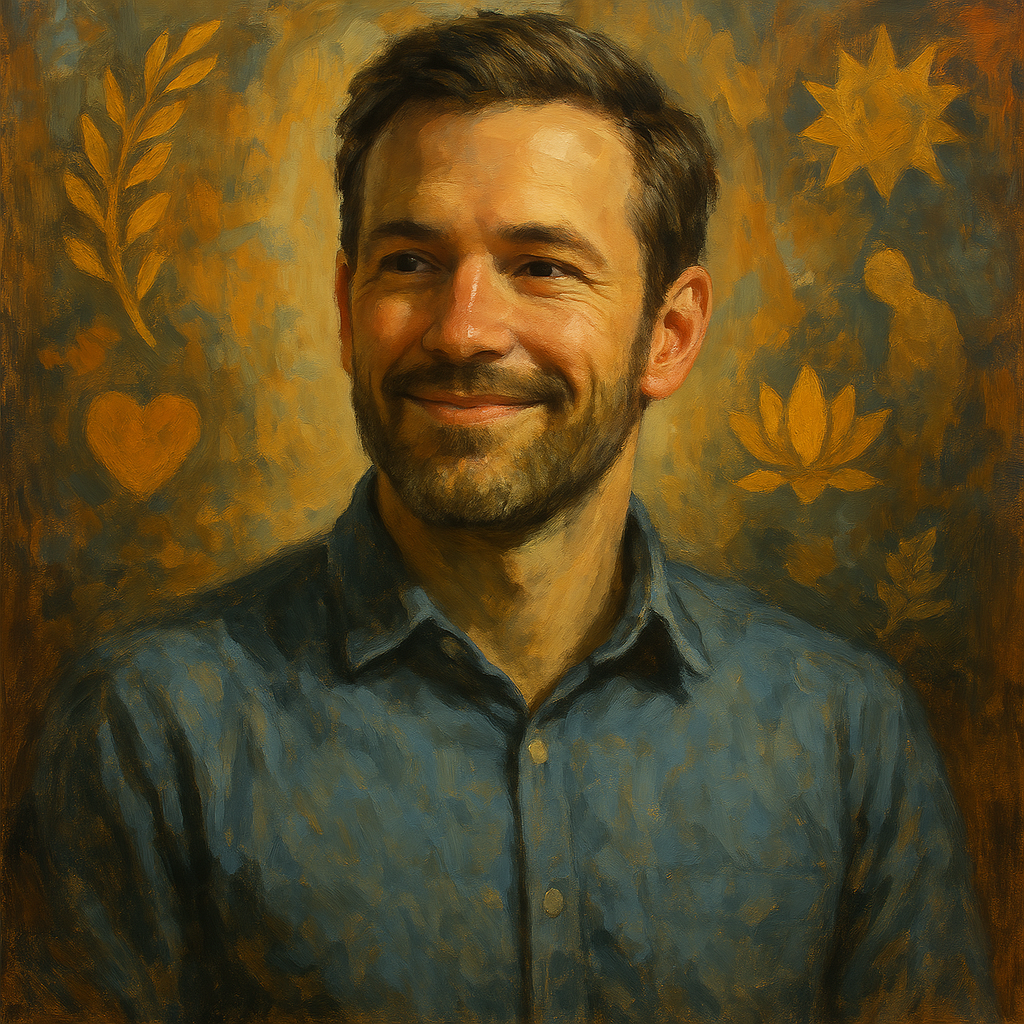
Chapter 1: This is How I Started, Life Without Roots

Bryant grew up feeling something was fundamentally missing, a sensation difficult to articulate but powerful enough to shape his earliest memories. His family had defied tremendous odds, clawing their way out of poverty and into a life of material comfort, but Bryant quickly learned that wealth alone couldn’t provide the foundation he needed. There was money, sure, but it often felt like a veneer over deeper cracks.
From an early age, he knew he lacked something essential: stability, certainty, a reliable sense of direction. His sharp mind raced ahead of his peers, picking up patterns and understanding systems with astonishing speed, yet socially and emotionally, he often felt isolated, misunderstood by even those closest to him. It was like being fluent in a language no one else spoke.
As Bryant grew older, the dissonance deepened. He admired people with clear, unwavering goals—pilots, engineers, soldiers—those who seemed deeply rooted in purpose and clarity. Drawn by this clarity, he set his sights on becoming an attack helicopter pilot. To him, it wasn’t simply about flying or adventure; it was about honor, meaning, and perhaps an early and honorable exit from life’s confusion.
But as he shared his plans with others, family and friends intervened, worried and well-meaning, advising safer routes. They meant well, trying to keep him safe in the only ways they knew. But their advice felt foreign, like clothing tailored for someone else entirely. Still, out of loyalty, respect, or perhaps uncertainty, he listened.
And in that listening, Bryant began to drift further from himself, setting the stage for a life of incredible reinvention and painful self-discovery. It would take many years and hard lessons to finally realize that roots couldn’t be borrowed or given—they had to be grown from within.
Chapter 2: Breaking Away

As Bryant ventured into adulthood, the absence of a solid foundation became increasingly apparent. His first attempt at finding direction led him to aerospace engineering—an ambitious field filled with precision, calculation, and clearly defined paths. Yet, despite immersing himself fully in its complexity, he felt disconnected, as though he had landed on someone else’s planet, fluent in their language yet perpetually feeling like an outsider. Something had happened to Bryant in his youth, an experience no child should endure. The family’s denial, internal hypocrisy, and absence of a healthy identity only deepened the wounds, signaling darker times ahead before healing could begin.
Unable to reconcile his discomfort, Bryant made a courageous decision: he dropped out of college. This choice shocked his family and peers, who saw it as reckless. But Bryant had begun to trust his intuition—conventional paths simply weren’t working, and it was time to create his own.
He invested in a rental property, immersing himself in the practical challenges of management, finance, and personal responsibility. Though the lessons learned were invaluable, something within him craved a greater challenge, a domain that could genuinely test and sharpen his strategic mind.
Bryant discovered that challenge in an unexpected place: competitive gaming, specifically within the realms of World of Warcraft. Here, Bryant didn’t merely participate—he strategized, orchestrated, and led. He built elite teams, meticulously recruited talented players, and crafted groundbreaking strategies. Managing raids involving 25 to 40 players, Bryant honed his leadership under intense pressure, adeptly balancing personalities, strengths, and weaknesses, all while setting world records and pushing the boundaries of what others believed possible.
Yet, despite significant success, Bryant remained restless. Gaming, while deeply rewarding in terms of strategy and leadership, felt too narrow to encompass everything he aspired to become. Driven by a persistent inner voice, Bryant returned to academics once more—this time exploring nuclear engineering, and then behavioral economics. Each new direction provided another layer of insight, each choice another step toward discovering what genuinely mattered.
With each pivot, Bryant gained invaluable insights: he wasn’t simply chasing success, but clarity, purpose, and authenticity. The winding journey taught him resilience, courage, and most importantly, set him firmly on a path of genuine self-discovery.
Chapter 3: False Starts and Hard Lessons

Bryant carried hidden burdens from his childhood, burdens he had neither chosen nor fully understood. The trauma he’d experienced early on manifested itself subtly, shaping his interactions, perceptions, and choices in ways that others seldom noticed but profoundly affected him. After his venture into gaming leadership, Bryant sought direction in academia once more, enrolling in nuclear engineering with hopes of finding the structured clarity he craved.
However, beneath the pursuit of academic excellence lay unresolved emotional turmoil. Bryant excelled academically, yet felt an increasing emptiness. The deep-rooted wounds of his past distorted his sense of self-worth and identity, leaving him restless and disconnected from even his most significant achievements.
His inner conflicts intensified during his time at JP Morgan, where he served as a Site Reliability Engineer. Here, Bryant encountered corporate power struggles and betrayal reminiscent of his earliest emotional injuries. Caught in a political battle between two leaders, he found himself scapegoated for following orders. The professional betrayal cut deep, reopening old wounds and amplifying his internal crisis.
Being fired was more than just a career setback; it felt like validation of the childhood pain he had always internalized. Yet, it also marked a critical turning point. Bryant realized that he could no longer afford to be defined by the trauma of his past or the expectations of others. This moment of profound humiliation and clarity set the stage for a journey toward genuine self-healing and autonomy.
Resolving never again to surrender control of his identity, Bryant began to envision a life crafted on his own terms—a journey that would lead him through intense pain and healing toward eventual empowerment and clarity.
Chapter 4: The Corporate Betrayal

Bryant’s time at JP Morgan represented a significant turning point, embodying the culmination of unresolved trauma and misguided attempts at finding external validation. He had entered the corporate world hopeful that structure and recognition would offer the stability he’d always lacked. Instead, the environment at JP Morgan amplified his internal conflicts, quickly becoming a stage for betrayal and disillusionment.
Initially, Bryant’s role as a Site Reliability Engineer felt promising, a place where his strategic mind and meticulous attention to detail could shine. However, beneath the surface of professional competence lay an intricate web of office politics and hidden agendas. Bryant unwittingly became trapped between two senior leaders, each using him as leverage in their internal power struggle.
When the conflict escalated, Bryant found himself blamed for following orders, unjustly becoming the scapegoat. The betrayal struck at something deeper than just his career—it echoed profoundly the wounds he’d carried from childhood, reaffirming painful beliefs about trust, worth, and safety. The humiliation and injustice were devastating.
Yet, in that moment of crisis, a shift occurred. The pain of betrayal forced Bryant to confront a critical truth: seeking validation through external structures and expectations was a losing battle. The firing, though brutally painful, became the catalyst for transformative clarity.
Determined to never again surrender his self-worth or identity to external judgment, Bryant began the challenging task of rebuilding from within. The corporate betrayal, as painful as it was, ultimately served as a powerful lesson. It became the starting point for Bryant’s true journey toward healing, autonomy, and a life built authentically from his own vision and values.
Chapter 5: Bluprnt – Mapping the Future of Legacy
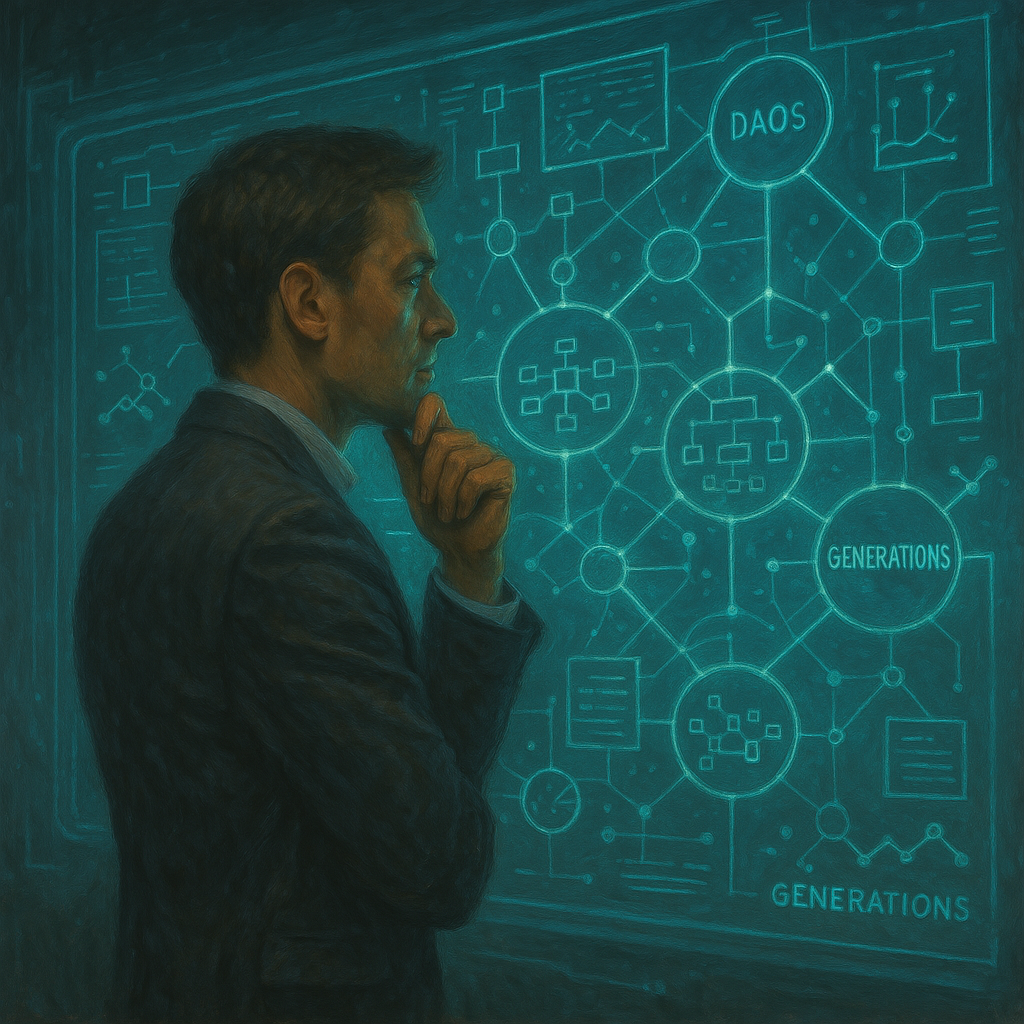
The aftermath of the JP Morgan betrayal left Bryant profoundly shaken but remarkably clear-eyed. He recognized that the systems he had trusted—corporate structures, societal expectations, even familial approval—had all failed him profoundly. Fueled by this stark realization, he began deeply questioning not only his personal trajectory but also larger societal patterns. Bryant became increasingly obsessed with the concept of legacy: how wisdom, wealth, and responsibility were passed from generation to generation.
In this exploration, Bryant saw his own struggles mirrored on a societal scale. Families, businesses, entire societies—each seemed to wrestle with effectively transferring values and resources to the next generation. He realized his personal battles were symptoms of a much broader systemic failure. Bryant’s vision crystallized into the founding of Bluprnt.org, a think tank aimed at revolutionizing how humanity approached legacy transfers through autonomous organizational theory—also known as Decentralized Autonomous Organizations (DAOs).
Bryant was deeply inspired by the potential of DAOs, envisioning systems that could scale collaboration effortlessly, removing friction and enhancing efficiency. The ideas felt revolutionary, a potential golden goose for humanity, promising more achievement with fewer resources. However, the boldness of his vision soon collided with reality; society wasn’t yet ready for widespread adoption of these concepts.
Despite initial setbacks and slow acceptance, Bluprnt offered Bryant a new foundation, one authentically aligned with his internal sense of purpose and values. It was an intellectual home that allowed him to apply his pain and insights constructively. Even when confronted by skepticism and misunderstanding, Bryant stood firm, confident that the ideas planted through Bluprnt were seeds destined to flourish, perhaps not immediately, but certainly in time.
Bluprnt represented Bryant’s first meaningful step toward genuine healing—a journey away from external validation and toward a self-defined legacy, laying the groundwork for what would come next.
Chapter 6: SmartFounders – Pivot to Efficiency
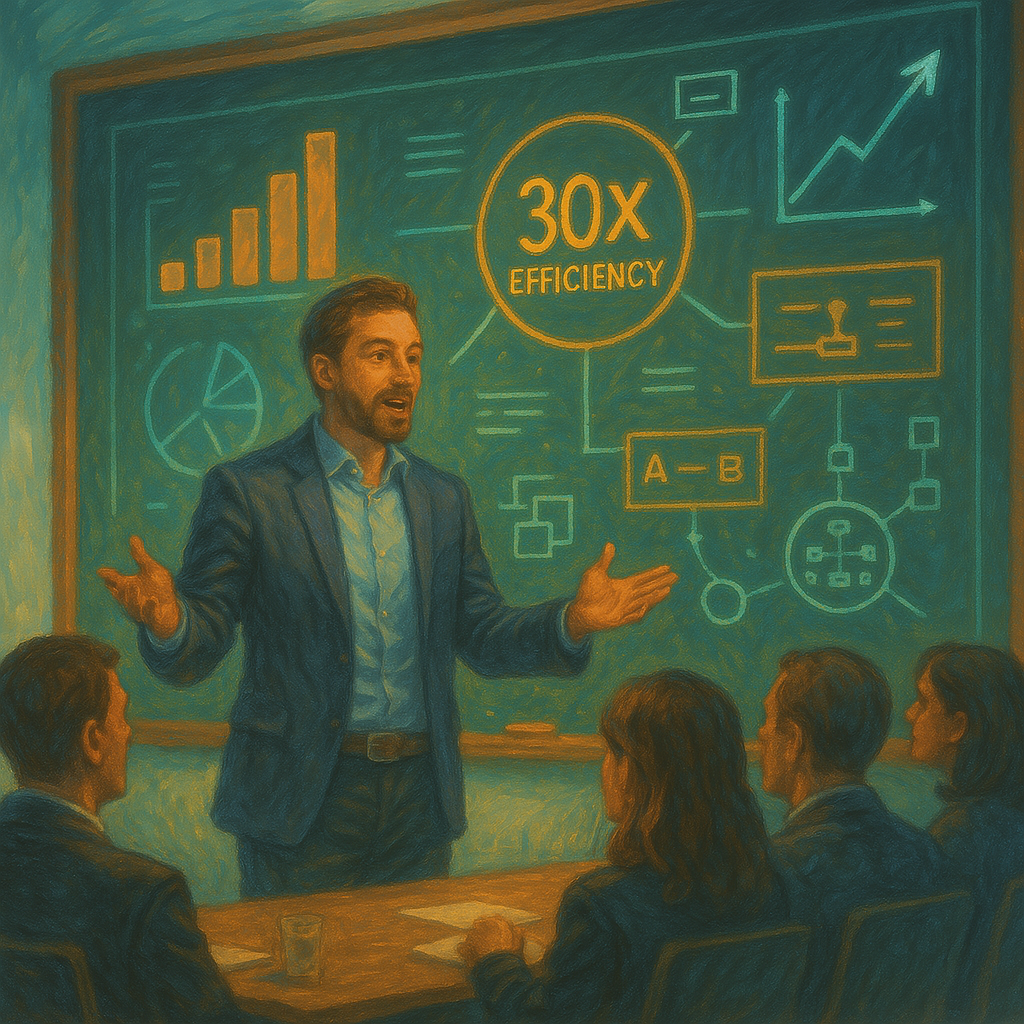
While Bluprnt laid the intellectual groundwork for Bryant’s healing, the pragmatic reality forced him to reconsider how his revolutionary concepts could gain practical traction. The bold promise of Decentralized Autonomous Organizations still felt ahead of its time, prompting Bryant to pivot. His focus shifted toward addressing immediate, tangible problems that resonated deeply with real-world needs—primarily, capital efficiency.
Thus, SmartFounders.io was born, a platform explicitly designed to improve efficiency and effectiveness in fundraising and business growth. Bryant utilized the same core insights about human behavior, collaboration, and trust that underpinned Bluprnt, but now targeted them toward solving pressing problems for startups and investors. His deeply strategic mindset, sharpened by past trials and lessons, became a powerful tool in building this innovative solution.
SmartFounders quickly demonstrated extraordinary results, running complex $5M projects on budgets as lean as $150K—achieving unprecedented 30x efficiency improvements. Bryant’s insight and meticulous strategic planning resonated deeply with entrepreneurs and investors, proving that revolutionary change could begin with incremental yet profound improvements.
As SmartFounders scaled, Bryant envisioned an even larger possibility: transforming multi-billion-dollar projects through unprecedented capital efficiency, potentially reducing project costs by half without compromising quality or outcomes. However, to achieve credibility and trust at an institutional level, he understood that efficiency alone wouldn’t be enough. High-quality deal flow and top-tier talent were essential.
Recognizing that true efficiency relied on people operating at their highest potential, Bryant innovatively focused on mindset and learning as core levers. The platform naturally attracted talent and opportunities through a powerful, intentional learning distribution model. SmartFounders became more than just a fundraising platform—it evolved into an ecosystem where high-caliber individuals gravitated organically, bringing exceptional opportunities and creating genuine value.
The successful pivot to SmartFounders didn’t merely validate Bryant’s strategic insights—it marked a personal triumph. He had taken the trauma, betrayal, and isolation of his past experiences and forged them into something powerfully constructive and socially impactful, paving the way for even greater breakthroughs ahead.
Chapter 7: Three Betrayals and the Loss of Billions
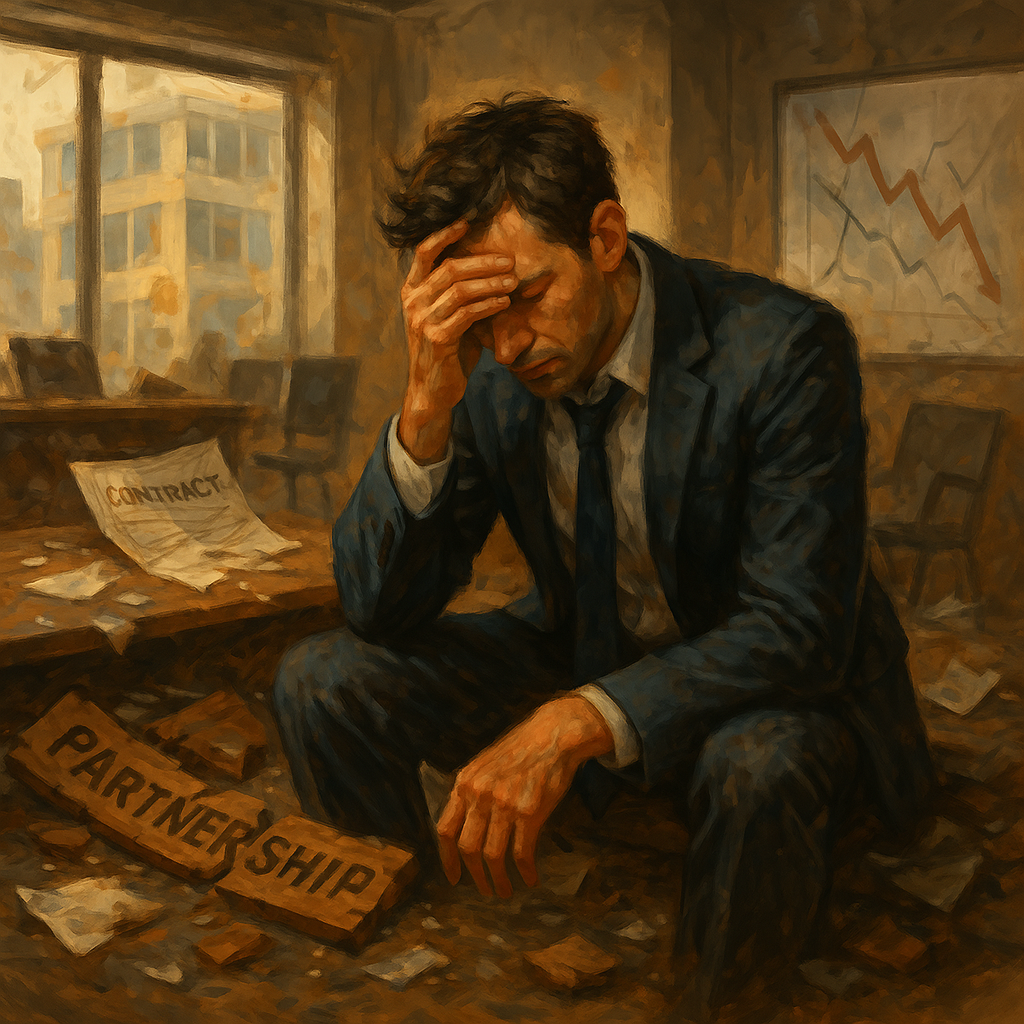
Despite Bryant’s remarkable progress with SmartFounders, he was about to face challenges that would test him even more profoundly. The journey toward creating transformative efficiency brought him into partnerships that, at first glance, appeared aligned and promising. Yet, beneath the surface, unresolved dynamics and hidden motives lurked, ready to disrupt and sabotage.
The first betrayal came swiftly—a hostile takeover attempt from partners he had deeply trusted. The painful realization that those closest to him could ruthlessly attempt to seize control cut Bryant deeply, reviving old feelings of betrayal and abandonment rooted in his childhood trauma. Though Bryant successfully navigated the attempt, it left scars, reinforcing the complexity of trust and partnership.
The second betrayal was subtler but no less devastating. Partners with whom Bryant had meticulously built connections began ghosting critical meetings, covertly manipulating deals behind his back. The insecurity and fear driving these actions deeply saddened Bryant. It was another lesson in how his unhealed past could influence present relationships, attracting familiar patterns of dysfunction.
But the third betrayal was the harshest and most impactful. At a pivotal moment in negotiations involving potential billion-dollar opportunities, a trusted partner publicly undermined Bryant’s credibility, declaring to crucial investors, “I’m all the value—I don’t even know what Bryant does.” This single act shattered trust, derailed critical deals, and cost billions in potential growth. It was an agonizing echo of Bryant’s early-life experiences—a validation of his deepest fears of worthlessness and rejection.
Yet, amid the devastation, Bryant found clarity. These betrayals were deeply painful but ultimately clarifying. Each loss forced him to confront and heal layers of emotional wounds he had carried unknowingly into adulthood. Bryant learned that betrayal was less about others’ intentions and more about his own unresolved trauma and boundaries.
Determined never to repeat these mistakes, Bryant integrated these harsh lessons into his core. He would build differently, choosing partners carefully, focusing relentlessly on authenticity, and dedicating himself to healing. The betrayals, painful as they were, served as crucibles—burning away what was false and preparing him for genuine transformation and lasting success.
Chapter 8: Ten Years in the Wilderness

Bryant’s third betrayal became the breaking point that forced him into deep introspection. Stripped of illusions, trust fractured, and facing immense professional loss, he recognized the stark truth—his external world mirrored unresolved internal chaos. Thus began a profound journey into what Bryant would later describe as his “wilderness years,” a decade spent confronting the depths of his soul, away from the validation of the outside world.
This period was not glamorous or easy. It was marked by isolation, ridicule, and misunderstanding. Family, peers, and former partners judged him harshly, seeing only failure and confusion. Labels such as lazy, user, and fraud were casually thrown his way, each insult echoing painfully against the backdrop of his hidden childhood wounds. Yet, amid the external noise, Bryant committed himself quietly and relentlessly to personal healing.
The wilderness became his teacher, solitude his ally. He studied deeply, exploring psychology, spirituality, and philosophy. Bryant faced uncomfortable truths about himself and his relationships. Each revelation peeled back layers of trauma and confusion, gradually clarifying his authentic self.
Within this solitude, Bryant experienced a profound spiritual awakening. His connection with God deepened dramatically, not in religious ritual, but through honest, raw encounters with his inner truths. Bryant understood forgiveness in ways he had never imagined, forgiving those who betrayed him and, more crucially, forgiving himself. He came to appreciate even his harshest critics, recognizing their roles in guiding him toward strength and clarity.
Slowly, resilience replaced self-doubt. Clarity emerged from confusion. Bryant found roots—real roots, grown from within. The decade in the wilderness transformed from a painful exile into sacred ground, a crucible forging authentic self-worth, identity, and purpose.
By the end of these ten transformative years, Bryant emerged ready—not simply to rebuild his professional life but to do so from a place of profound authenticity, clarity, and spiritual grounding. The wilderness had been harsh but necessary, reshaping him into the man he was always meant to become.
Chapter 9: Anchoring in Faith and Love
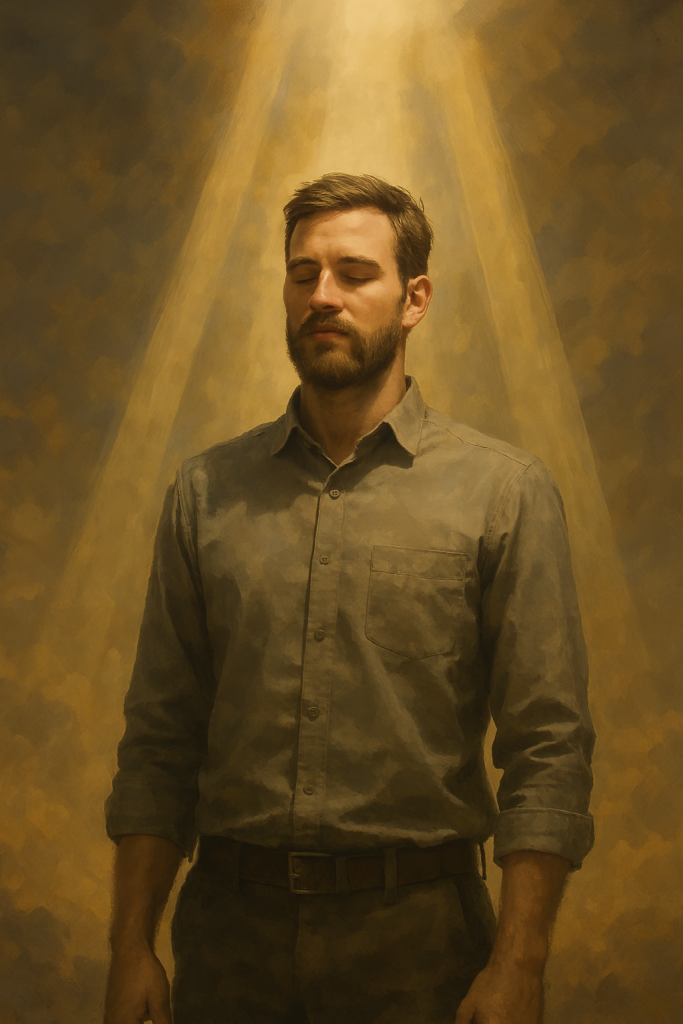
Emerging from the decade-long wilderness, Bryant discovered a profound truth—he was no longer the person he had once been. The intense solitude and reflection had reshaped him fundamentally, replacing old insecurities with a newfound sense of peace, strength, and purpose. Central to this transformation was his deepening connection to faith and love.
Bryant’s understanding of faith expanded beyond traditional religious structures. In the quiet moments of introspection, he had encountered an unconditional divine presence, a love that neither judged nor demanded, but patiently guided and healed. This connection became Bryant’s true anchor, providing a stable foundation that he had never experienced before.
Forgiveness played a pivotal role in his healing. Bryant found strength not only to forgive those who betrayed him professionally and personally but also, most crucially, to forgive himself. The bitterness of betrayal and trauma gradually dissolved, replaced by compassion and understanding. Bryant began genuinely appreciating those who had doubted and misunderstood him, recognizing their vital role in his growth.
With faith as his anchor, Bryant no longer felt the need to seek validation externally. Gone were the days of manipulation, deception, and restless striving for approval. He experienced profound freedom in embracing integrity and authenticity, understanding that true power lay not in control but in vulnerability and trust.
This shift allowed Bryant to rebuild relationships from a place of genuine authenticity and deep empathy. Love became his guiding principle, reshaping his interactions and decisions. For the first time, he felt capable of forming partnerships built on mutual respect, transparency, and shared vision.
Anchored in faith and love, Bryant was finally ready to take his hard-won wisdom back into the world. His vision for the future was clearer than ever, built on the solid ground of inner peace and self-awareness. Bryant knew he had something invaluable to share—a way to build, connect, and lead rooted in authenticity, compassion, and lasting impact.
Chapter 10: The Learning Network – Building a Legacy That Lasts
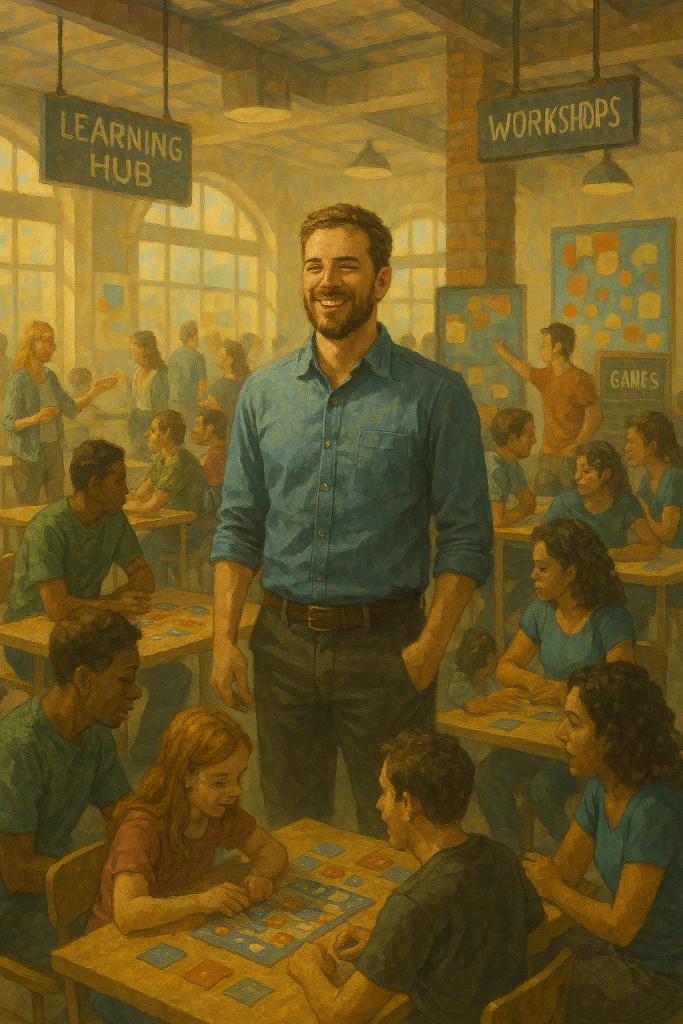
With newfound clarity, Bryant envisioned a path forward—one firmly anchored in authenticity, empathy, and meaningful impact. Reflecting on all he had experienced, from corporate betrayal to profound personal healing, he recognized the potential to leverage his insights into a tangible, transformative project: the Learning Network.
Bryant’s vision for the Learning Network was expansive yet deeply practical. He imagined a global network of interconnected communities focused on fostering genuine learning, effective collaboration, and intentional growth. Central to this vision was the idea that traditional educational and professional systems had failed in crucial ways, often prioritizing competition over cooperation, credentials over genuine capability.
The Learning Network became a vibrant ecosystem built around live events, innovative games, workshops, and local hubs—all designed intentionally to encourage real-world application, collaboration, and meaningful relationships. Bryant emphasized experiential learning that deeply resonated with participants, ensuring that each interaction was both memorable and actionable.
The network naturally attracted high-quality individuals eager for genuine connection and growth. This environment organically generated exceptional deal flow and partnership opportunities. Bryant witnessed firsthand how trust, transparency, and mutual support significantly amplified both personal and collective success.
The Learning Network represented more than just a successful business or innovative concept—it was Bryant’s deeply personal mission to rewrite the narrative around how people learn, connect, and grow. For Bryant, it embodied the principles of authenticity, faith, and love that had become his guiding lights.
As the network flourished, Bryant observed profound transformations among its members, communities becoming stronger, individuals more empowered, and organizations more effective. He realized that the Learning Network wasn’t merely solving practical problems—it was reshaping how entire communities transferred wisdom, responsibility, and wealth, effectively addressing the very societal issues Bryant had identified years ago.
With each new hub and community formed, Bryant saw tangible evidence of a legacy that would endure far beyond his own journey—a legacy built intentionally from the ground up, founded upon authenticity, empathy, and genuine human connection.
Chapter 11: The Man He Became

The creation and growth of the Learning Network represented far more than professional achievement—it symbolized the profound personal transformation Bryant had undergone. The man who emerged from years of struggle, betrayal, and introspection bore little resemblance to the person he’d once been. Bryant had become someone authentically grounded, deeply empathetic, and profoundly self-aware.
No longer driven by external validation or haunted by unresolved trauma, Bryant stood confidently rooted in his identity. The insecurities and wounds that had defined so much of his past no longer held power over him. He discovered immense freedom in authenticity and vulnerability, now understanding that strength lay in openness and integrity rather than manipulation or control.
The clarity of Bryant’s vision and the sincerity of his leadership resonated deeply with others. Relationships formed in this new era were characterized by mutual respect, transparency, and trust. His interactions became meaningful, his connections genuine, reflecting the profound internal shift he had experienced.
Reflecting upon his journey, Bryant recognized that the greatest achievement of his life wasn’t any external milestone—it was the person he had become. His trials had taught him resilience, his betrayals compassion, and his solitude clarity. The painful lessons of his past became powerful tools for empathy, understanding, and effective leadership.
Bryant’s sense of gratitude ran deep. He felt genuine appreciation for everyone who had doubted him, betrayed him, or misunderstood him along the way, understanding now how each challenge had served his growth. He embraced a profound sense of humility and thankfulness, recognizing even adversity as a valuable teacher.
Most significantly, Bryant’s journey had clarified his purpose. The man he had become was committed not only to his own continued growth but also to empowering others on their journeys. Through authenticity, love, and faith, he sought to build a lasting legacy that would inspire future generations to live genuinely, compassionately, and effectively.
Bryant now stood ready for whatever lay ahead—not driven by ambition or fear, but guided firmly by authenticity, faith, and love.
Chapter 12: A Future Built on Roots
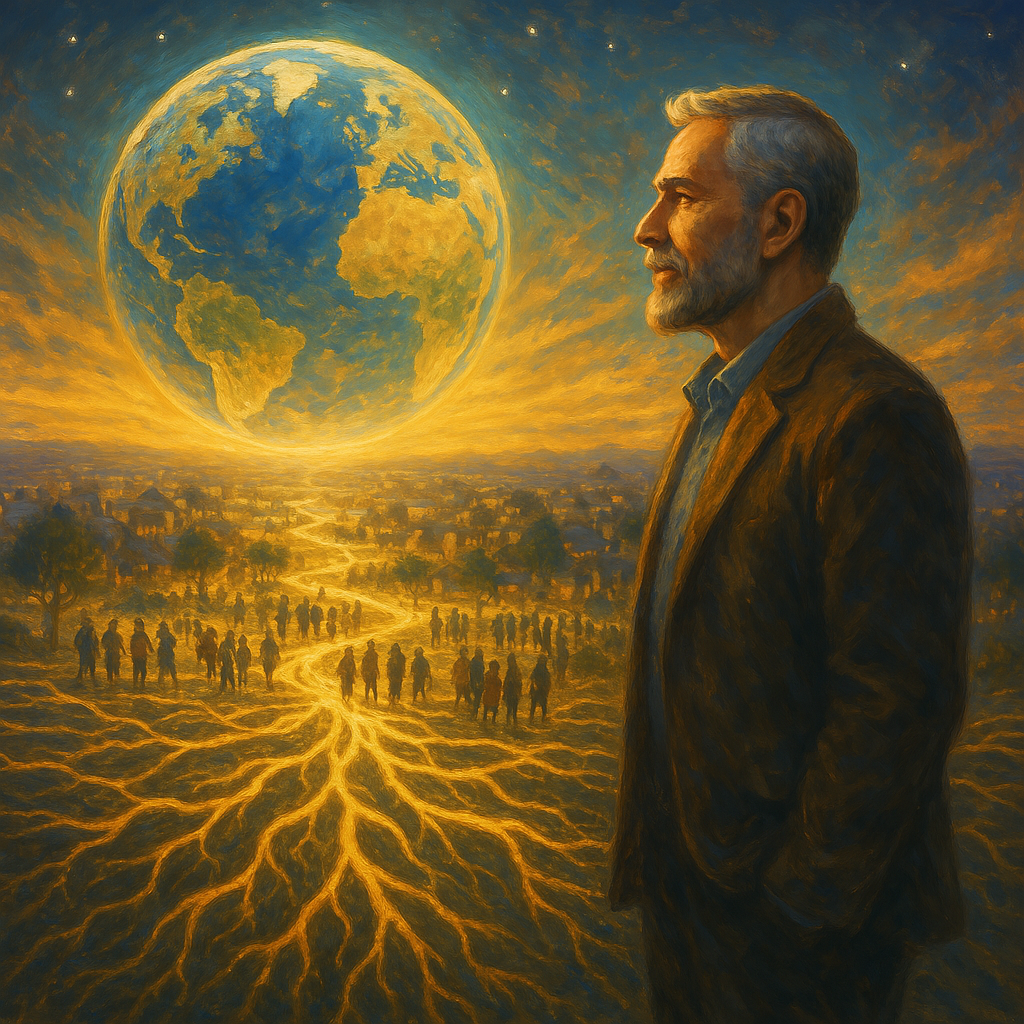
Looking ahead, Bryant saw clearly the future he intended to build—not just for himself, but for his children, communities, and future generations. His vision was deeply rooted, no longer in external achievements or transient validations, but in lasting principles of authenticity, empathy, and meaningful connection.
Bryant envisioned the Learning Network evolving into a global movement, reshaping societies by fundamentally transforming how people approached learning, collaboration, and legacy. He imagined communities empowered with the tools and mindsets necessary to foster genuine growth, effective cooperation, and lasting prosperity.
For Bryant, this vision was deeply personal. He recognized the potential for his children and future generations to inherit a world far healthier, more authentic, and genuinely supportive than the one he’d experienced. His personal journey had made abundantly clear the crucial importance of nurturing genuine human connection, resilience, and integrity—values he now aimed to embed deeply into the fabric of communities worldwide.
Bryant’s future was also marked by an intentional commitment to mentorship and empowerment. He sought opportunities to share his hard-won wisdom, providing guidance and support to individuals navigating their paths toward authenticity, clarity, and purpose. Bryant understood that his true legacy lay not in his personal success, but in the success, well-being, and empowerment of those he inspired and supported.
As Bryant reflected on his journey, gratitude permeated every thought. He felt profound thankfulness for the wilderness, betrayals, and challenges that had shaped him, understanding that each had been essential in clarifying his values and purpose. With clarity, Bryant stood poised to live intentionally, grounded deeply in faith, love, and authenticity.
He knew the road ahead would still hold challenges, but he felt uniquely prepared. His journey had gifted him a powerful internal anchor—a foundation grown from within, resilient and unshakable. Bryant was ready not only to face the future but to actively shape it, ensuring a lasting legacy deeply rooted in genuine human connection, integrity, and meaningful impact.
Conclusion: A Prophet’s Honor
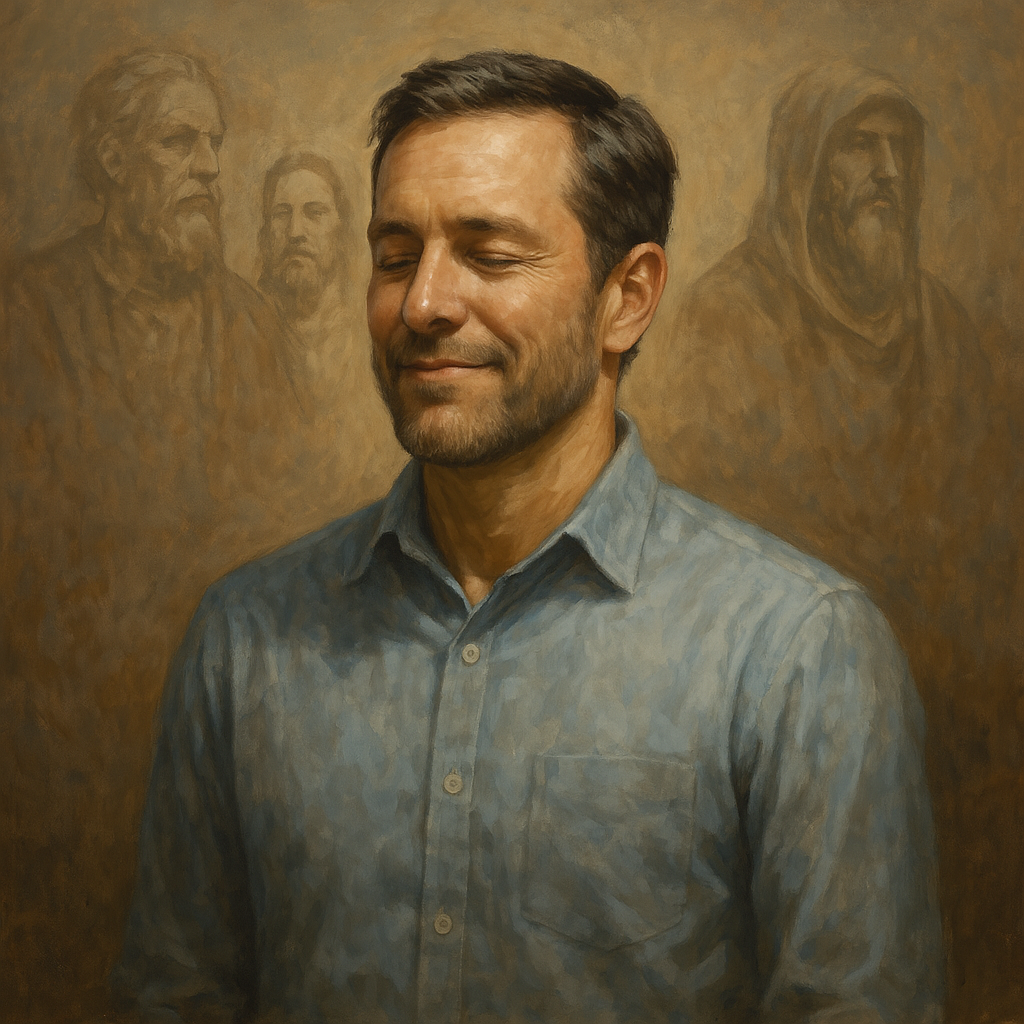
Bryant often reflected on the profound wisdom in the words, “A prophet has no honor in his hometown.” Through his transformative journey, he’d lived the truth of this ancient proverb. The misunderstandings, betrayals, and judgments he’d faced were hardest from those closest to him—those who had known an earlier version of him and struggled to accept his profound evolution.
Yet, Bryant no longer carried bitterness or disappointment about this reality. Instead, he had found peace and genuine honor—not externally bestowed but internally discovered through his deep journey of self-realization and spiritual awakening. The validation Bryant had sought so desperately in his younger years was now replaced by an unshakable internal knowing, a groundedness rooted in authenticity, compassion, and faith.
Bryant’s understanding of honor had radically transformed. It was no longer about recognition from others but rather about integrity, authenticity, and alignment with his true self. Honor, he realized, was found in the courage to live truthfully, vulnerably, and empathetically, regardless of external opinion.
This profound shift allowed Bryant to approach life with humility, gratitude, and unwavering resilience. He honored those who had misunderstood or challenged him, recognizing their essential role in his journey. His vision for the future was deeply rooted not in external success but in genuine human connection, effective collaboration, and lasting, meaningful impact.
Bryant stood ready for whatever lay ahead, fully embracing his role as a guide, mentor, and leader. His life had become a testament to the power of authenticity, faith, and love, and he intended to carry these principles forward, inspiring others to find their internal honor, clarity, and strength.
With humility and profound gratitude, Bryant acknowledged the winding path that had led him here—a path marked by challenges and betrayals, solitude and introspection, but ultimately clarity and empowerment. It was not an easy journey, but it had been worth every step. Bryant was now firmly rooted in a future defined by authenticity, empathy, and true honor—a future built intentionally from within.
